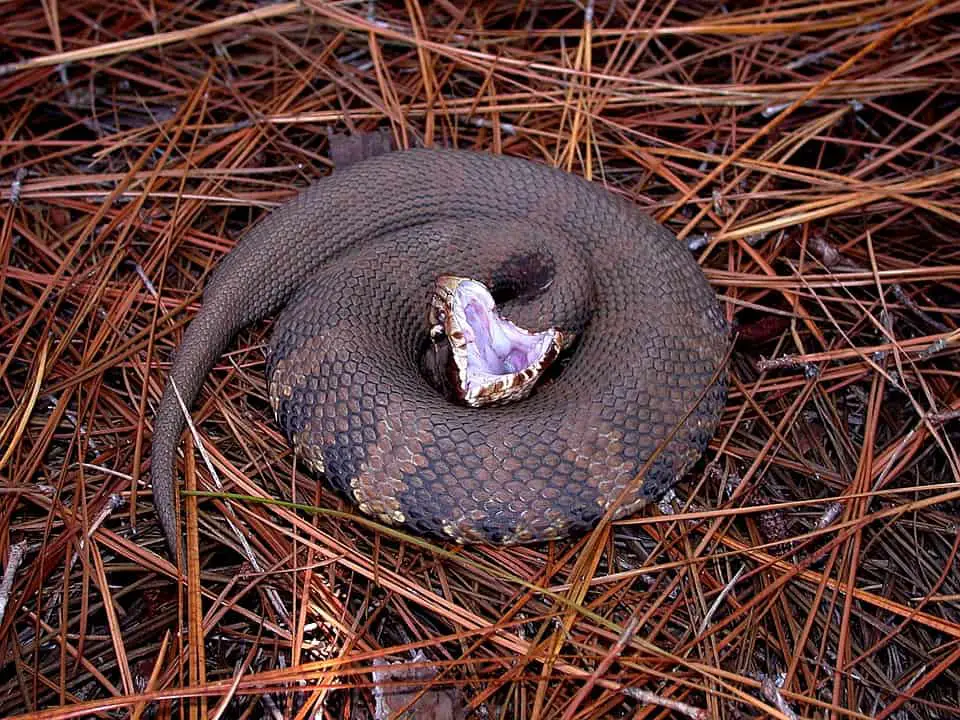Table of Contents
Do Snake Bite Kits Really Work?
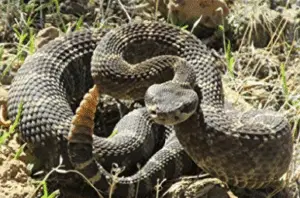
From the first time I read about them, I loved the idea of snake bite kits, and instantly wanted to know what the best options were. As someone afraid of snakes, & fearing a venomous snake bite in an isolated area, the promise of being able to treat it seemed great.
But do snake bite kits really work? The problem is the answer is unequivocally NO! While stories of these kits working still refuse to die, the overwhelming evidence says snake bite kits are not only useless in treating snake bites, but can even make things much worse!
So what’s the full story behind snake bite kits? Well basically the idea seems like a good one in theory, but studies show that the venom from a snake bite is either injected into the blood stream far too fast for the kit to work (even if it was out in your hands at the time) or the bite was dry in which case you would survive (which is the likely cause of most snake bite kit “saved my life” stories) anyway without treatment.
So are snake bite kits a helpful way to minimize the potential damage or are they a harmful con that causes people to spend money on equipment that actually makes the overall situation worse?
Unfortunately it looks like the latter. As someone who has a pretty strong fear of snakes, and my brother shares the same fear (he almost stepped on a large rattlesnake during a drought year in Iowa – that sticks with you), we are the type of targets for a product like this. So are they worth getting or are they more scam than safety kit?
There are many anecdotal stories about how these kits have helped save lives. But a little bit of digging shows these are always anecdotal stories. 99% of time a secondhand account, or occasionally a person’s first hand account (and let’s be honest they might not know enough to know what they’re talking about).
These stories get shuffled around and repeated, but what’s the actual truth behind them? There are plenty of people who swear that snake bite kits work, but this Wall Street Journal online article (apologies, this link is now behind a paywall if you don’t have a subscription) suggests otherwise.
This means the best snake bite kits are ones that you never break open to use (except maybe removing a bee stinger – more on that later).
Despite the claims of companies like Sawyer that produce many of these snake bite kits, the overwhelming consensus seems to be that snake kits are not a great idea for treating a venomous snake bite, and in fact might even make the overall situation worse.
We are going to dive into the actual case for snake bite kits, and then the case against. Then share the results so you can make a smart and informed decision.
Current 2019 UPDATE
With more studies in recent years we feel confident strengthening this statement to “snake bite kits are a terrible idea and often worse than doing nothing” – so read on for more.
Important Note
If you’re going to skim through the article or read nothing else, please view the absolute last video in this article, the one on “How to treat a snake bite” at the end of the In Conclusion section of this article. While we’re committed to showing every possible side of an argument, this is too important a topic to not get to that last expert video, which lays out the best argument we’ve ever seen on this topic.
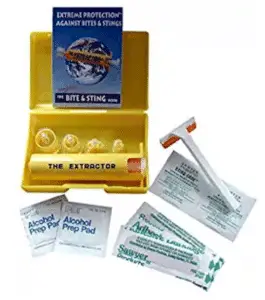
The Case For Snake Bite Kits
There are a few examples of stories that purport to show that snake bite kits helped save a person’s life after they were bit by a snake. Most of these stories come secondhand from hunting forums. Or even third hand from “my cousin knew someone who…”
Then there is the heavily publicized case online that has appeared on The Blaze and YouTube talking about the case of Chad Cross in Alabama. Chad was bitten by a rattlesnake while out hunting before treating himself with a snake bite kit.
The story goes that he immediately took out a snake bite kit and used it for ten to fifteen minutes to extract as much venom out of the bite wound as possible. After this self-treatment in the wild he managed to get out of the woods and drive to the doctor where he could then receive the necessary anti-venom to stop (or at least curb) the worst effects of the rattlesnake venom.
The doctor is said to have praised the snake bite kit. The story goes that the doctor then told bite victim Chad Cross that the treatment using the snake bit kite almost certainly saved his life.
This is the one story that comes up again and again when looking for examples of where these kits might have done some good. However, you still need to see this story as anecdotal in nature because assuming this story is 100% true, that is one doctor’s opinion and that could be based on incorrect belief or old ideas of treatment.
What does that all mean?
Frankly it means even if the story is not fishy (in this case let’s assume it’s all true – it sounds legit) the conclusions are faulty. What if he survived because the bite was a dry bite, or just a minor bite that had little venom to it? Most venomous snake bites are actually one of those two – only about a quarter of venomous snake bites are full all-out envenomation.
In that situation using a snake bite kit could have made things worse and he still could have survived.
The Case Against Snake Bite Kits
The case against using snake bite kits is much, much stronger. In fact, even some basic first aid treatments I learned from my days in Boy Scouts seem to no longer apply. For years we were taught to never put on a tourniquet, but to still have a constrictive band a few inches above the bite area to help slow the spread of venom.
Most first aid classes now teach that this is wrong. At least for any of the venomous snakes you’ll find in the United States. There are other parts of the world with certain species where this can be valid.
Snake venom bonds with the blood almost immediately, and people are often surprised to learn just how fast blood moves through the entire human body. This means that once the venom is in, no matter how fast you break open that kit, the venom is already in the blood, in the tissue, and it’s not just sitting there.
In theory the suction won’t do any good at that point, which is something basic testing on multiple occasions has seemed to confirm.
The evidence seems fairly overwhelming that snake bite treatment kits don’t work – at least not for that specific use. While generally not a scam, they’re still ineffective and possibly harmful treatments for a life threatening situation. We’re definitely about the effective prevention side of things.
A short list of articles that agree with this point of view going against snake bite kits include:
- Snake bite kits by Sniff Outdoors
- Herpetologist (and TED talk guest) specialist’s complaint
- Simple article brings the point home
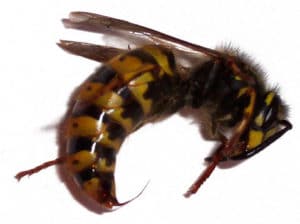
Perhaps Useful For Insect Stings – Maybe
The overwhelming amount of evidence seems to indicate that these kits are a terrible idea for treating a venomous snake bite. That being said, there is one area where they might actually be useful as a legitimate first aid or survival treatment: removing stings or stingers.
For individuals who are allergic or tend to react to bee stings, getting stung multiple times even in the arm or leg can be a really serious issue, and one of the best things they can do is make sure to remove the stingers and the venom that is attached with/around them.
While we need to point out this isn’t the stated use for most of them, although there are some suction kits out there that do advertise themselves as being multi-faceted, generally speaking the suction technique is going to work better for forcing out stingers or small foreign objects than for snake venom.
You still want follow up first aid materials to help take care of the resulting open wound, since infection can still be an issue.
Those of us (Shane speaking here) who tend to be bleeders who don’t like to clot also need to patch up every cut or gash. For us it doesn’t take that much to hit some pretty serious blood loss, and it is just a good idea in general to fix up each injury as you get it. Once again, maybe okay for helping to take out insect stingers but with snake venom it’s not the right treatment.
Snake Bite First Aid – What to Do When Help Isn’t Close
One of the major caveats we need to start off this section with is the basic disclaimer: treatments and recommendations can change over time. In the same way that snake bite first aid has changed drastically in the 20 years since I was last in Scouts, this may change again but we’re doing our best to bring you the best current information on what to do in tough situations when you’ve been bitten by a venomous snake.
When it comes to being bit when you’re close to civilization the treatment is relatively easy:
- Move out of the danger zone
- Try to identify the snake from a safe distance, or at least a basic description (picture via cell phone camera is bonus here)
- Keep calm
- Bring medical attention to you, or calmly proceed to where you can get medical attention
- Get anti-venom ASAP
However, things get a little bit more complicated if you find yourself in the middle of nowhere. Hypothetically, what do you do if you get bit out in the wild and you are miles and miles from help?
Treating a snake bite in the wild
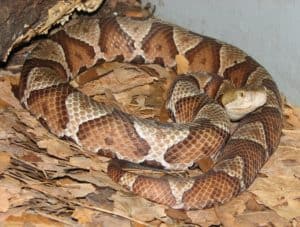
That is a much more potentially dangerous situation, but even then, a snake bite kit is NOT the answer.
The first step is still to move out of the danger zone. You don’t want to get bit a second time. If you can identify the snake from a distance, great, but don’t antagonize it any more or try to interact with it.
If you can call for an emergency rescue via beacon or cell phone, do that, and then focus on immobilizing the bit limb. You then need to focus on staying as calm as possible for as long as possible.
An elevated heart rate is not your friend in this case.
But if you find yourself truly out in the wild then you need to prioritize getting to medical care over hoping to be found. This is a LAST RESORT and only in these extreme situations is that the best answer, but if you find that you need to save yourself then you need to undo any loose clothing around the limb where you were bit, because there is going to be massive swelling and tissue damage – but cutting off circulation will be even worse.
You need to stay calm to keep your heart rate down and slowly but steadily make your way at a slow walk towards the nearest point where you can be rescued or find help. If the bite is a dry bite or a small envenomation (together these make about 1/2 of all bites) and you have an excellent chance of being fine if you get treatment within 12-24 hours.
Even for medium level bites, you have an excellent chance of surviving. Most deaths by snake bite in the United States occur because a person has an allergic reaction to one or multiple bites, the person already had a severe heart problem or compromised immune system, or the person refused medical treatment for long periods of time (sometimes days) before succumbing.
This means keeping calm and reminding yourself that chances are you have time will help you make that slow walk to get picked up and get the anti-venom treatments you’ll need – but remember that most things that seem intuitive (ice and tourniquets) will actually be the opposite of helpful, so avoid that and make a slow but calm and steady pace towards civilization and anti-venom treatment.
What’s The Final Verdict?
I’ll be the first one to admit that I’m not an expert when it comes to this type of equipment, but I find the following video really informative. While I’ve found plenty of information (and some really crazy videos) showing the benefits of anti-bite snake boots and snake proof gaiters, I can’t find the same level of evidence for snake bite kits.
That’s also the big reason we haven’t linked to any snake kits in this article. We feel confident in recommending (and thus being affiliates for) snake proof boots and gaiters but we want to always do our best to keep our readers safe and prepared, and in the end we’re going with the experts who say these snake kits don’t work.
As for stories of “So-and-so used them and lived after a snake bite,” this interview with an expert further explains those situations.
Please watch this last video, watch your step, and be safe out there! There are no best snake bite kit options! You need to use good first aid and prevent bites with situational awareness and things like snake boots or gaiters that can protect your legs.

